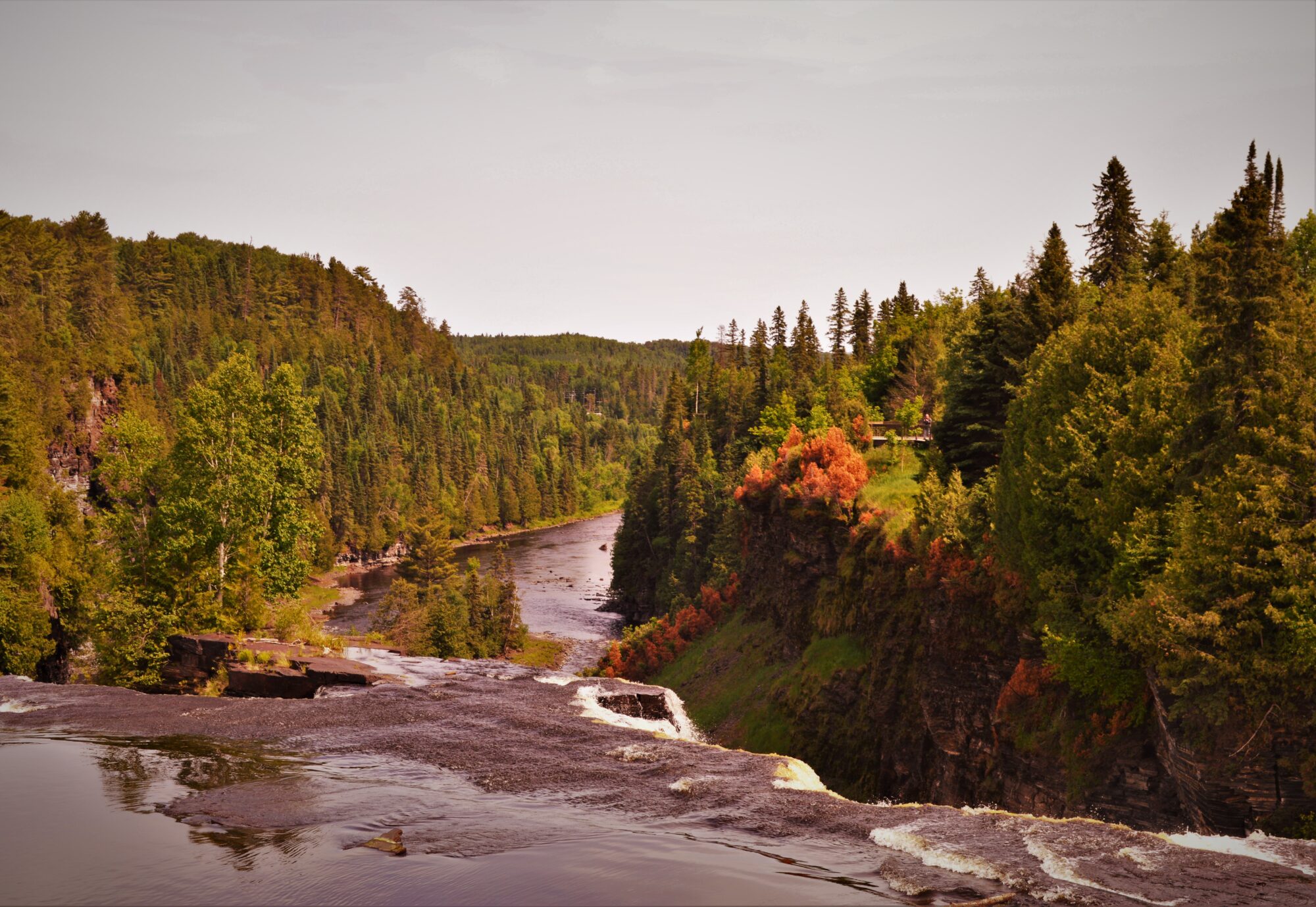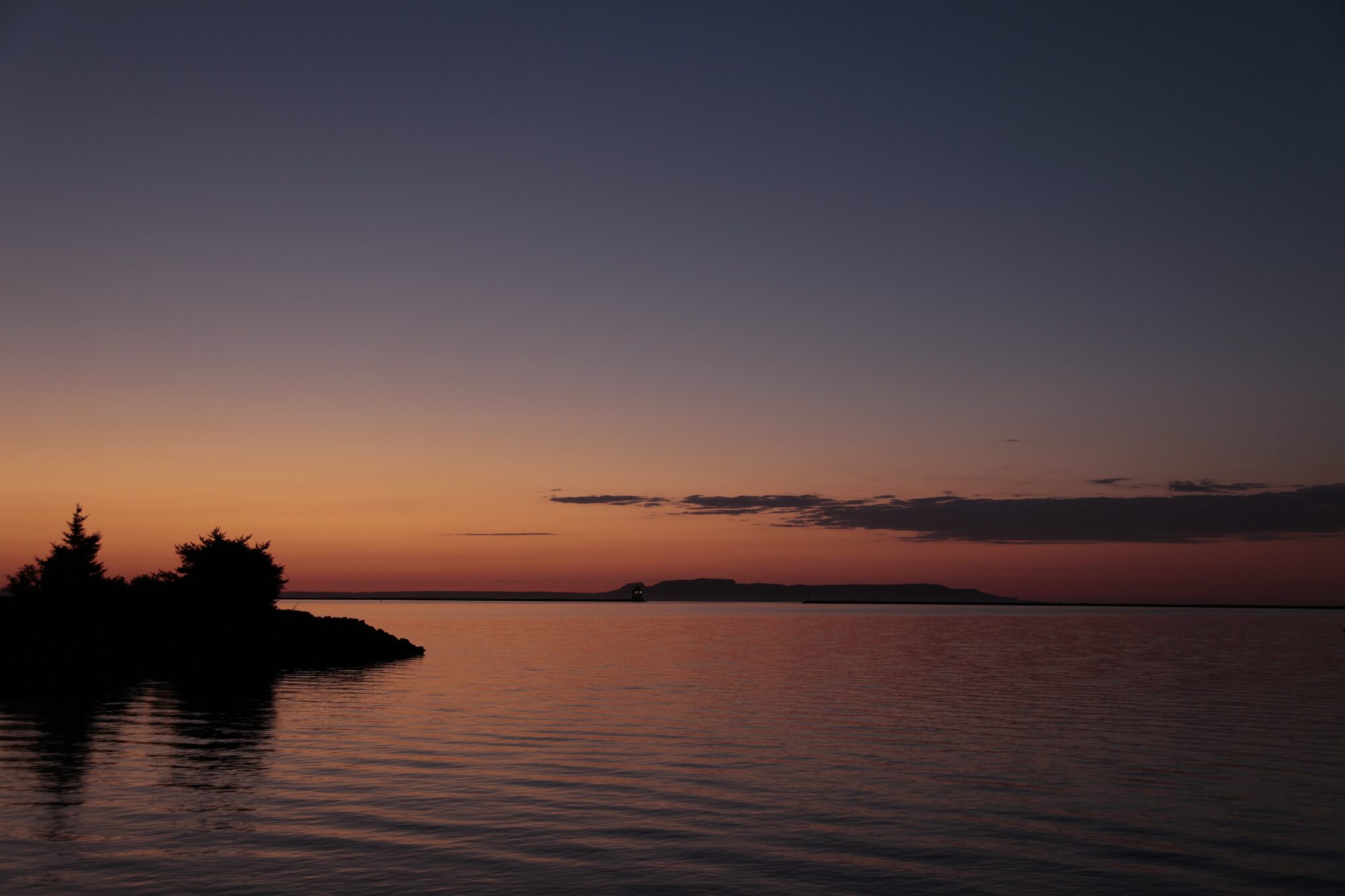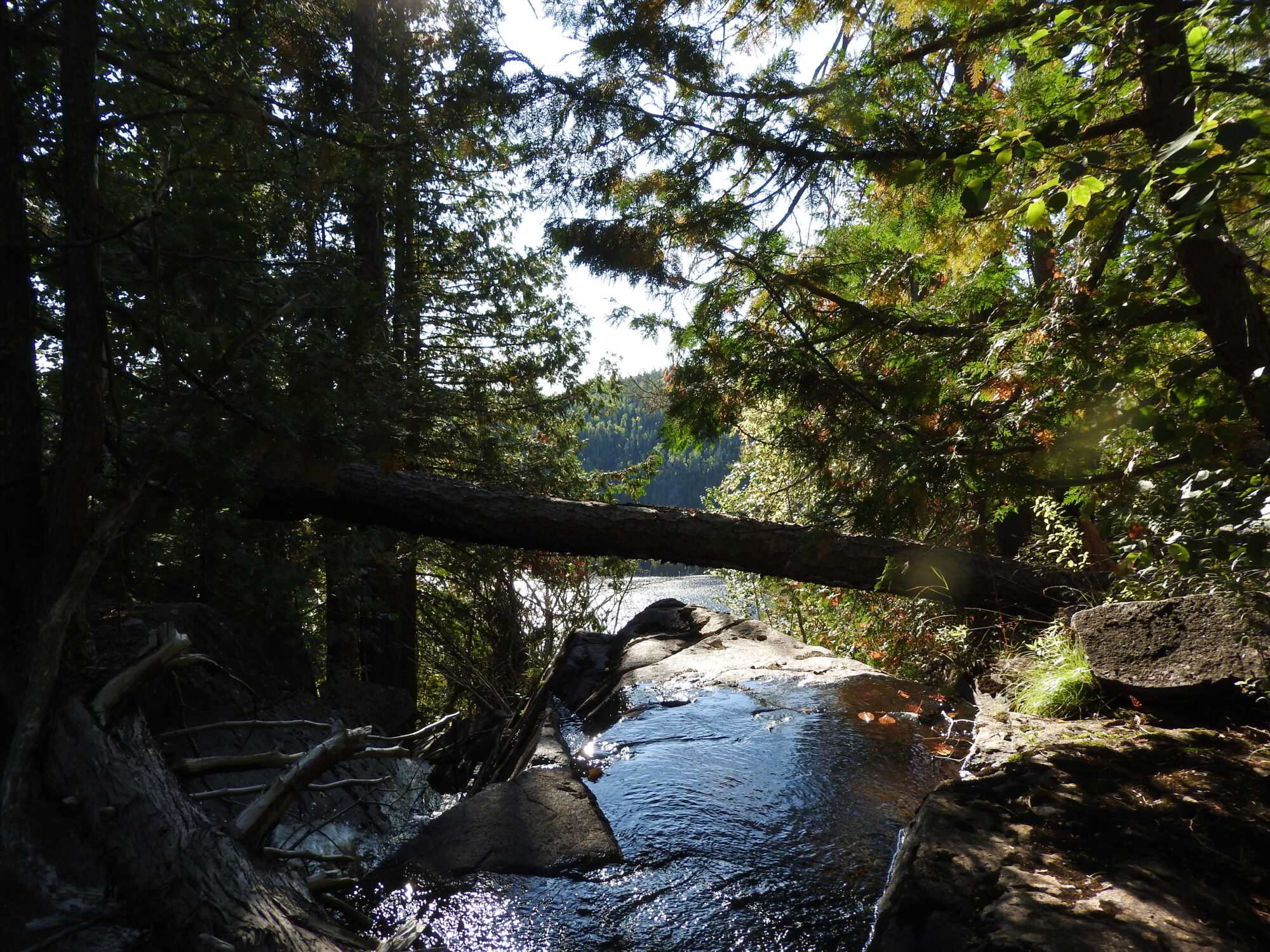
About The Indigenous Group of Seven
Back to Superior Country BlogThe Indigenous Group of Seven, also known as the Professional Native Indian Artists Inc., was established in Winnipeg, Manitoba, in the early 1970s. Members of the Indigenous Group of Seven include Jackson Beardy, Eddy Cobiness, Alex Janvier, Norval Morrisseau, Daphne Odjig, Carl Ray, and Joseph Sanchez.

Despite the diverse Indigenous nations represented by each group member and their distinct painting styles, the members of the Indigenous Group of Seven shared a joint commitment to advancing the causes of inclusivity, acknowledgment, and equitable art funding accessibility for all Indigenous artists in Canada.
Altogether, their influence on developing contemporary Indigenous art practice and their acceptance in the critical art world paved the way for Indigenous art to thrive today. With the years of the Indigenous Group of Seven came a time of activism and empowerment for Indigenous artists and their perspectives, voices, and presence in the art community.

There is no question of the impact the Indigenous Group of Seven had on growing artists who wish to find a place in the art world. Because of them and their advocacy, they carved a space where Indigenous artists can belong in Canadian art. Most notably, they paved the way for organizations such as the Society of Canadian Artists of Native Ancestry and The Aboriginal Curatorial Collective.
In honour of each member, here is a compiled list of the Indigenous Group of Seven, their lives, and their contributions to the art world so that their names remain as legendary as their lives.
Jackson Beardy
Born Quincy Pickering Jackson Beardy on July 24, 1944, in Island Lake, Manitoba, is of Oji-Cree descent. His artwork explored the interdependence of humans and nature through figures and pictures of Ojibwe and Cree oral traditions. All of which were taught to him by his grandmother. His paintings were notoriously done on different canvases, as he switched between using birch bark, beaver skins, or the typical canvas. Being a woodland artist and advocating for Indigenous presence in contemporary art in Canada, Beardy contributed significantly to Indigenous art being a valid category in the contemporary art scene.

Beardy’s first exhibition was at the University of Winnipeg in 1965. From there, he had several solo shows over the 60s and 70s. Among his solo exhibitions, in 1967, he was invited to be a consultant for the Indians of Canada Pavilion at Expo 67 in Montreal.
After his passing in the year 1984, his legacy was not lost. In 1995, A Retrospective titled Jackson Beardy: A Life’s Work was on display at the Thunder Bay Art Gallery in Superior Country, celebrating the life and work of this incredible artist. His work was loved by many and was even presented to Queen Elizabeth II by the province of Manitoba in 1979.
Eddy Cobiness
Known to some as “Doc,” Eddy Cobiness was born on July 17, 1933, in Warroad, Minnesota, USA. His work, mostly of animals in nature, was inspired by artists like Pablo Picasso. He used many different mediums, some of them being oil, ink, watercolour, and acrylic, with his brush strokes being commonly referred to as “flowing.”
He began to explore his artistic talents starting at a young age; in his childhood, he used mediums easily accessible to him, such as sand, snow, and cardboard. As he grew up, though he wasn’t formally trained or educated in the visual arts, his self-taught style continued to create incredible works. In the 1950s, while enlisted in the US Army, he discovered watercolour.

After his newfound love of watercolour, his early work featured a lot of this medium, as well as ink, which is what sparked his commercial art career. Over time, Cobiness’ art skills started to evolve, which is when he began exploring other mediums and styles, including abstract art, becoming internationally successful and therefore celebrated.
Later, he moved to Buffalo First Nation in Canada, where he kept a studio on the shore of Lake of the Woods. Then, in 1974, Cobiness moved to Winnipeg, Manitoba. There, he found work as a graphic designer before eventually becoming a celebrated contemporary Indigenous Artist. His works were collected by many notable people, such as Queen Elizabeth II, Academy Award-winning actor Charlton Heston, and Canadian Prime Minister Jean Chretien.
Daphne Odjig
Daphne Odjig was born on September 11, 1919, on Wiikemkoong Unceded Territory in Manitoulin Island, Northern Ontario and is of Anishinaabe ancestry. With an artistic career of over 6 decades, her creativity spanned multiple mediums, including lyrical legend paintings, personal reflective memories, and trenchant historical and political critiques.
Her relationship with art started very early on. At age thirteen, she contracted rheumatic fever and had to leave the school environment. As a result of this, her education came from her grandfather, a stone carver and a storyteller. Her grandfather taught her stone carving, drawing, and the oral traditions of her family, which carried on into her legendary artwork.

She kept on learning her craft as she grew up. During WWII, she moved to Toronto, where she spent her weekends carefully studying and analyzing the works of painting masters at the Royal Ontario Museum and the Art Gallery of Ontario. This studying was evident in her early career, as you can see the influence of painters like Pablo Picasso, Matisse, and the Impressionists.
The style and media she worked with changed based on the subject matter of her art. For example, her early narrative paintings in the 1960s were primarily fluid calligraphic lines. Her historical paintings, on the other hand, were always densely expressive. In the 1980s, when she used elegiac colour studies, she was painting the British Columbia Forests. Odjig combined her feminism and Indigenous culture to create bodies of work that helped bring Indigenous voices to the foreground in contemporary art.
Odjig’s first solo exhibition happened in 1967 in Thunder Bay, Northern Ontario, at the Lakehead Art Centre. She had a second the following year in Brandon, Manitoba. Following that exhibition, she gained attraction from the wider public, which resulted in many commissions and larger projects. For example, she completed a series of illustrations for Dr. Herbert Schwarz’s book Tales from the Smokehouse in 1968. Among that, she also created a collage titled Earth Mother for the Canadian Pavilion at Expo ‘70 in Osaka, Japan.

Among her notable artistic career, in 1971, she established Odjig Indian Prints of Canada Ltd. and a small crafts shop in Winnipeg, Manitoba. From this, she sold and distributed not only her own work but also the work of other Indigenous artists struggling to participate in the local art community. This craft shop was so successful that by 1974, it expanded. It was renamed the New Warehouse Gallery and the first Indigenous-owned art Gallery in Canada.
The Warehouse became the hangout spot for Indigenous artists to meet, talk about art, plan projects, and, most importantly, voice their concerns and aspirations about the place of Indigenous art in Canada. These artists, who were troubled with the attitude that Indigenous art in Canada was only exotic handicraft meant for museums and not defined as fine art, banded together to name themselves the Professional Native Indian Artists Inc., now known as the Indigenous Group of Seven.
Alex Janvier
Alex Simeon Janvier was born on February 28, 1935, on Le Goff Reserve, Cold Lake First Nation, near Bonnyville, Alberta, in Treaty Six territory. This Denesuline and Saulteaux artist had quite the career over his lifetime, often considered the first Indigenous modernist in Canada.
Janvier’s artistic interest started at a young age. When he was just eight years old, he was sent to the Blue Quills Residential School near St. Paul, Alberta, where he made his very first paintings. When he grew up, he graduated from the Alberta College of Art and Design in 1960. After graduation, he became an art instructor at the University of Alberta. Then, in 1971, Janvier made the decision to paint full-time.
As an artist, Janvier’s style was abstract and modernist. He had a vibrant colour palette that represented the spiritual traditions of his ancestors. His abstract and linear work can be “characterized by whiplashing pools of colour on negative space.” (The Canadian Encyclopedia)

His distinct work can be seen in many museums across the country; some of them include the National Gallery of Canada, the Canadian Museum of History, the Montreal Museum of Fine Arts, and the Winnipeg Art Gallery, just to name a few. He was known to sign his paintings with nothing but his treaty number, “287.” This is because, in 1966, the Department of Indian Affairs asked Janvier to produce eighty paintings. Not only was this a lot, but they pressured him to do it quickly. Then, when his work was displayed at an exhibit in Ottawa, the government sold thirty-eight of his paintings while commandeering the rest. As an act of protest and defiance of the government’s actions, he stopped signing his name, therefore signing only his treaty number.
Janvier did have many exhibitions of his own, even being invited to Sweden in the year 1977. He also had a travelling one-person exhibition, The Art of Alex Janvier: His First Thirty Years (1960-1990), which was organized by the Thunder Bay Art Gallery in 1993. In that same year, he was commissioned to paint one of his largest murals, Morning Star, which can be found on the dome of what is now known as the Canadian Museum of History in Gatineau, Quebec.
In 2003, Janvier and his family opened a gallery in his home territory of Cold Lake, Alberta. They continue to operate and showcase his art and Indigenous art to this day.
Norval Morrisseau
John Baptist Norman Henry Morrisseau was born on March 14, 1931 or 1932, in Fort William, now Thunder Bay. Growing up, he spent much of his time in Bingwi Neyaashi Anishinaabek, also known as Sand Point First Nation near Beardmore. Morrisseau’s very distinct style of bold and vibrant colours depicts traditional Anishinaabe stories, legends, and spiritual themes, proudly representing his deep connection to Indigenous heritage and traditions.
While growing up on Bingwi Neyaashi Anishinaabek, Morrisseau spent much time learning traditions from his grandfather on the land, such as fishing and trapping. This is also where he explored and expanded on his artistic gifts. For example, he would draw pictures on the wet sand of the beaches he encountered.
His famous style combined traditional iconography with contemporary artistic techniques. The thick and bold black lines of the people and animals in his paintings were x-ray views of them, as he followed the woodland school of art (aka style of art). In doing this, the composition of thick lines and bold colours created a visual language that bridged the gap between the past and present, acknowledging his ancestors.
Throughout his long career, Morrisseau had many notable exhibitions. In 1968, for example, he had his first international exhibition at the Art Gallery of Newport in the United States. The following year, he had another international show, except this time, it was in the south of France. After this exhibition, he became internationally referred to as the “Picasso of the North.” Other significant works by Morrisseau include Indian Jesus Christ, painted in 1974, and Androgyny, done in 1983, which is 3.5 m tall and 6 m wide and was installed in the lobby of the then Department of Aboriginal Affairs and Northern Development Canada.

Norval’s art celebrated and embraced the rich, vibrant, and beautiful depth of Indigenous culture and tradition. He challenged the dominant art world by showcasing the power of Indigenous narratives, voice, and presence. Norval’s advocacy for Indigenous rights and cultural preservation leaves a lasting impact on not only the belonging of Indigenous people in the art world but also Canadian popular culture as a whole.
Carl Ray
Born on Bingwi Neyaashi Anishinaabek, in Northwestern Ontario in January 1943, Cree artist Carl Ray was a prominent woodland artist for most of his career. Known for having an innovative style, his influence on Indigenous art in Canada can be found in many of the galleries and museums across the country.
As a child, he was taken to a residential school in McIntosh but left at fifteen. To make a living, he worked as a trapper and a gold miner. However, it was during this time in his life he also started to paint, which is why he is described as being a self-taught painter.
In his early career, he became friends with fellow Indigenous artist Norval Morrisseau, who took him under his wing as an apprentice. From there, and under Morrisseau’s woodland artistic guidance, Ray became known for his own take on the woodland painting style. He is notably one of the first Cree painters to reject the traditional bans against the depiction of sacred Indigenous legends within his art.

Staying on the theme of the woodland style, he painted the relationships between humans, animals, and the legendary creatures of his culture. He would boil down his colour palette into mainly brown, black, and blue, always painting in ink and watercolour. Because he was inspired by the woodland style, he often depicted x-ray-like images, showing energy lines of the interior of the figures in his paintings. All of the figures were inspired by the stories he heard from his grandfather, a medicine man in his home community of Sandy Lake.
Ray worked with Morrisseau on a large mural for the Indians of Canada Pavilion at Expo ‘67. Morrisseau designed and sketched the mural entitled Earth Mother With Her Children, and Ray finished the later developments through painting. Ray completed large-scale murals on his own as well, as he was commissioned by Sandy Lake Primary School and the Sioux Lookout Fellowship and Communication Centre.

Ray had his fair share of solo exhibitions, as he had work shown at Brandon University in Manitoba in 1969, at Confederation College in Thunder Bay in 1970, and at the University of Minnesota in 1972. That same year, Ray also had an exhibition at Aggregation Gallery in Toronto, where they continued to show his work for several years even after he passed, representing his estate into the early 1980s.
Other distinguishable works done by Ray include providing the cover art for James R. Stevens’ book, The Sacred Legends of the Sandy Cree, in 1971, and cover illustration for Tom Marshall’s book The White City, in 1976. He was also approached by the Department of Indian Affairs and the Government of Ontario to visit Northern communities and reserves for the Northern Arts Tour. He did this with his mentor, Norval Morrisseau.
After tragically passing away by stabbing in 1978 at just 35 years old, Carl Ray is remembered through the influence he had on Indigenous resistance through his beautiful woodland paintings that, like all members of the Indigenous Group of Seven, gave voice to Indigenous art in Canada.
Joseph Sanchez
Born in 1948 in Trinidad, Colorado, Joseph Sanchez grew up in White River, Arizona, on the White Mountain Apache Reservation. During his incredible art career, Sanchez became a community elder, political activist, museum director, and curator for major galleries and exhibitions. Most of all, Sanchez’s influence created recognition and exposure to Indigenous art in Canada.
Sanchez’s love and talent for painting and art started at a very young age. In 5th grade, his teacher noticed his artistic talent, and encouraged him to paint. From this, in high school, he started painting large portraits of his friends and family, becoming fascinated with historical artistic movements like the Renaissance, dadaism, surrealism, and contemporary art.

In 1970, he moved to Canada, got married, and settled down on a farm in Giroux, Manitoba. Two years later, he became a part of the Indigenous Group of Seven. From there, in 1974 he was commissioned to create the painting The Virgin of Light, which became the Juno Award for Multiculturalism in Music. He was also commissioned to create the Fertility Totem that same year, where a 2.75 m sculpture was installed in the Centre Culturel Franco-Manitoban in St. Boniface, Manitoba, for the Winnipeg Centennial.
In 2006, Sanchez received the Allan House Memorial Award for artistic excellence and community involvement. It is an award that recognizes him not only as an incredible artist but also as an activist for Indigenous arts.

 Walleye
Walleye Northern Pike
Northern Pike Lake Trout
Lake Trout Brook Trout
Brook Trout Steelhead
Steelhead Salmon
Salmon Smallmouth Bass
Smallmouth Bass Perch
Perch Superior Picnics
Superior Picnics